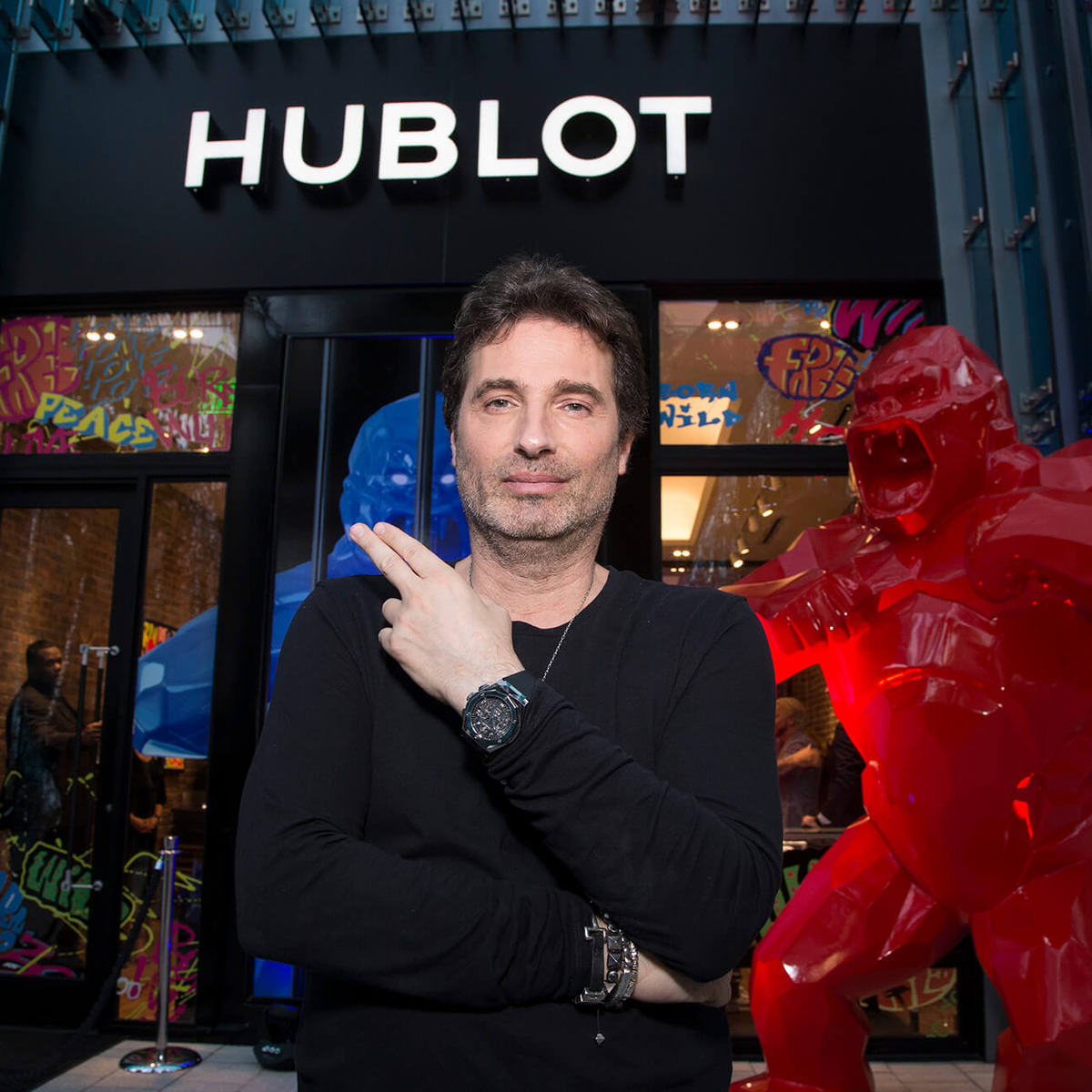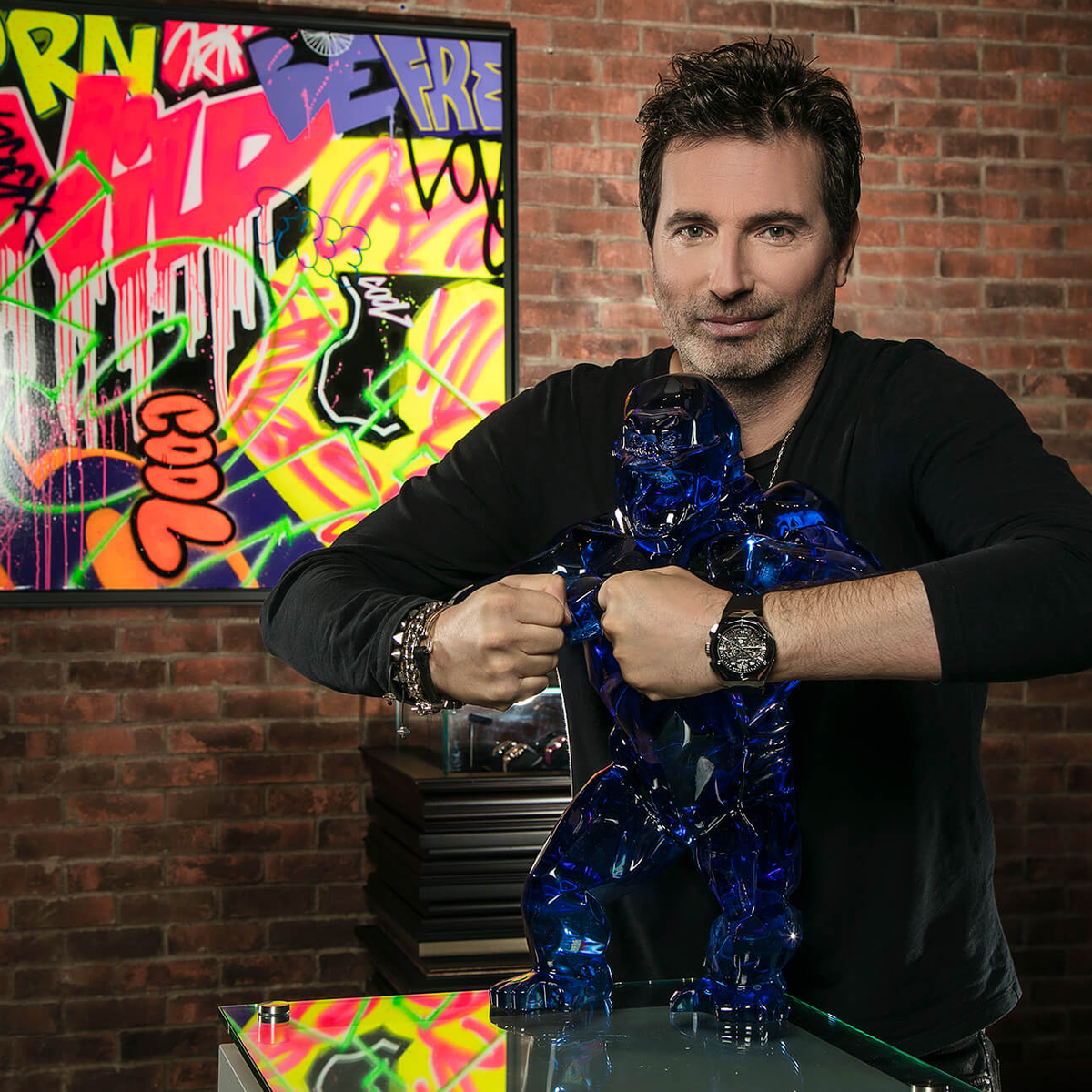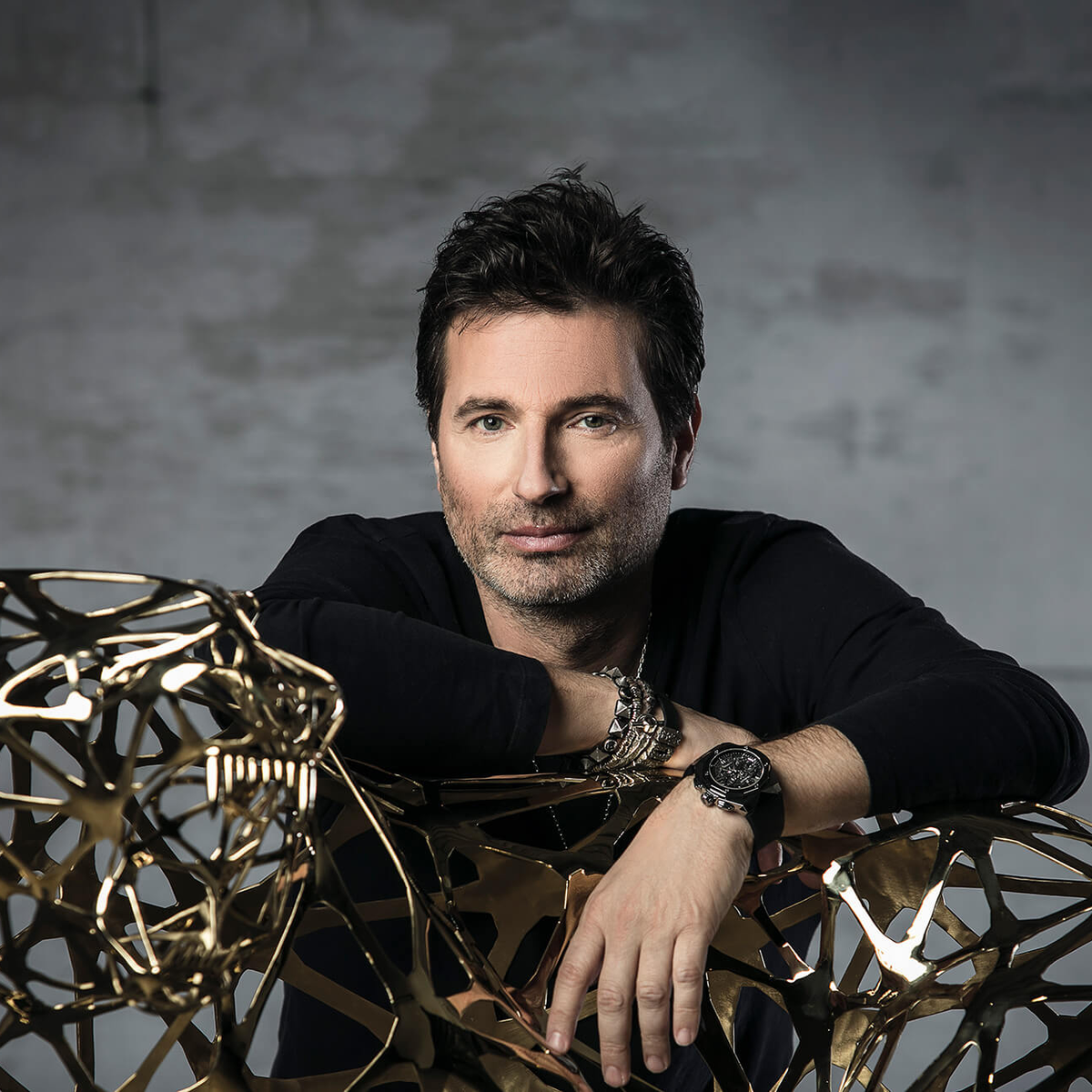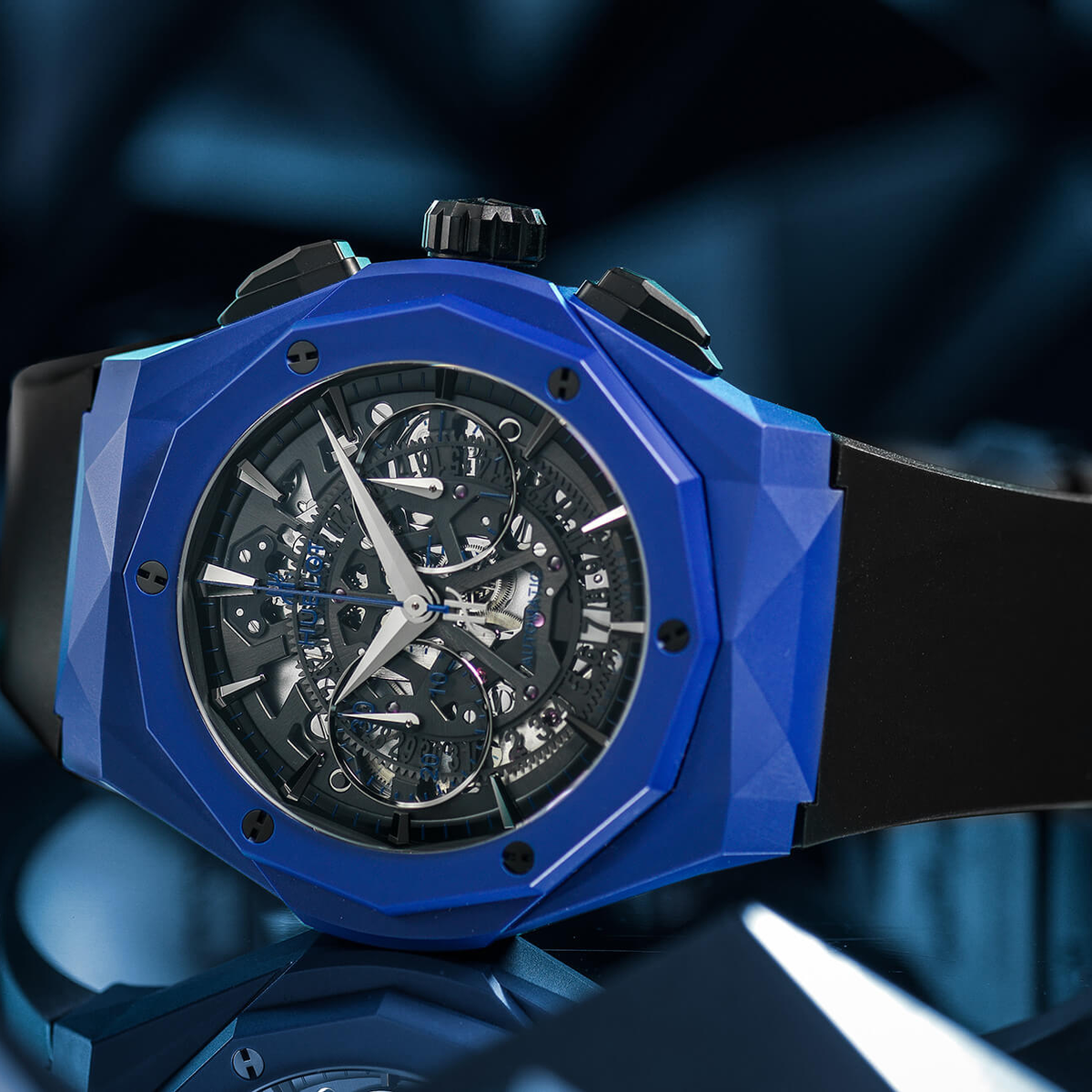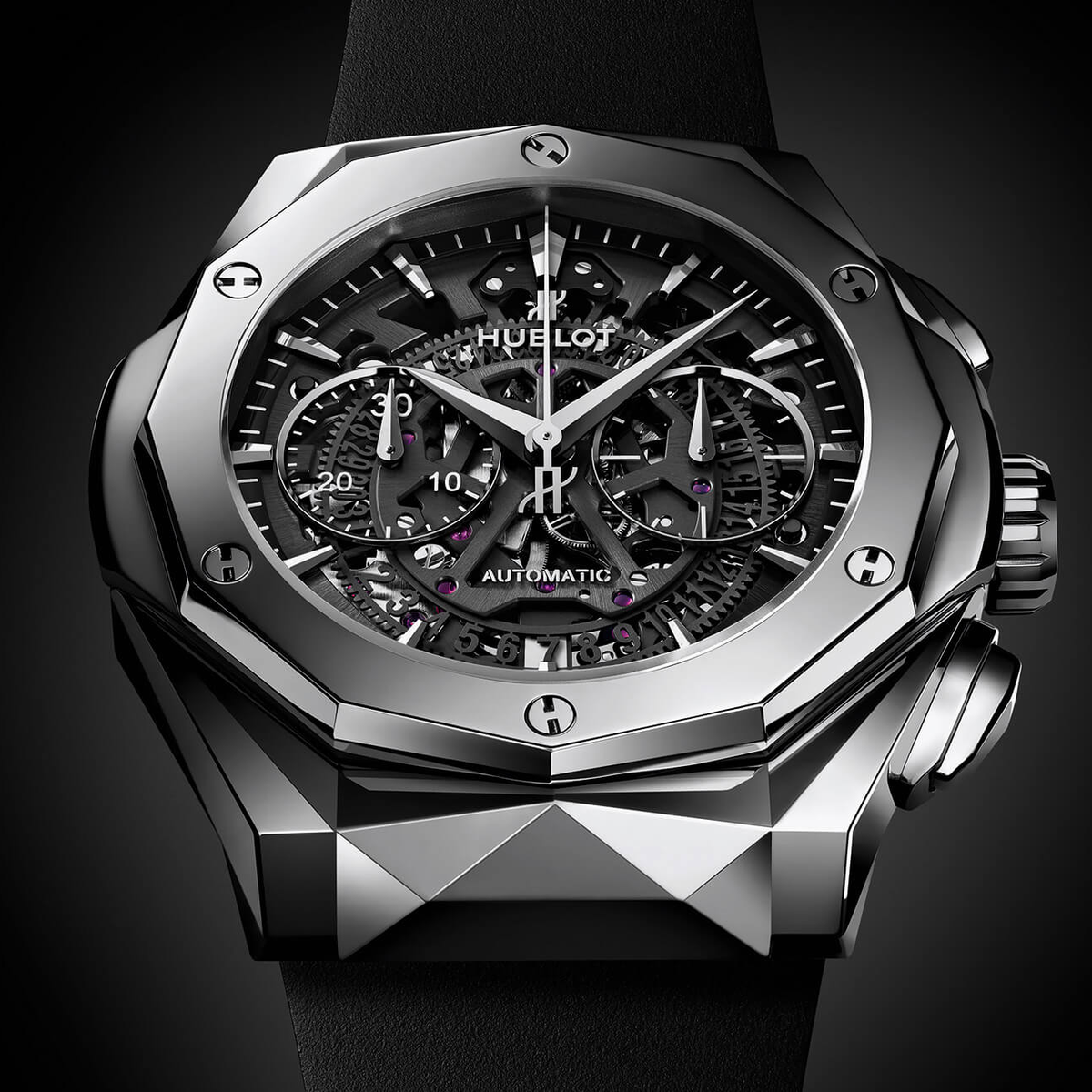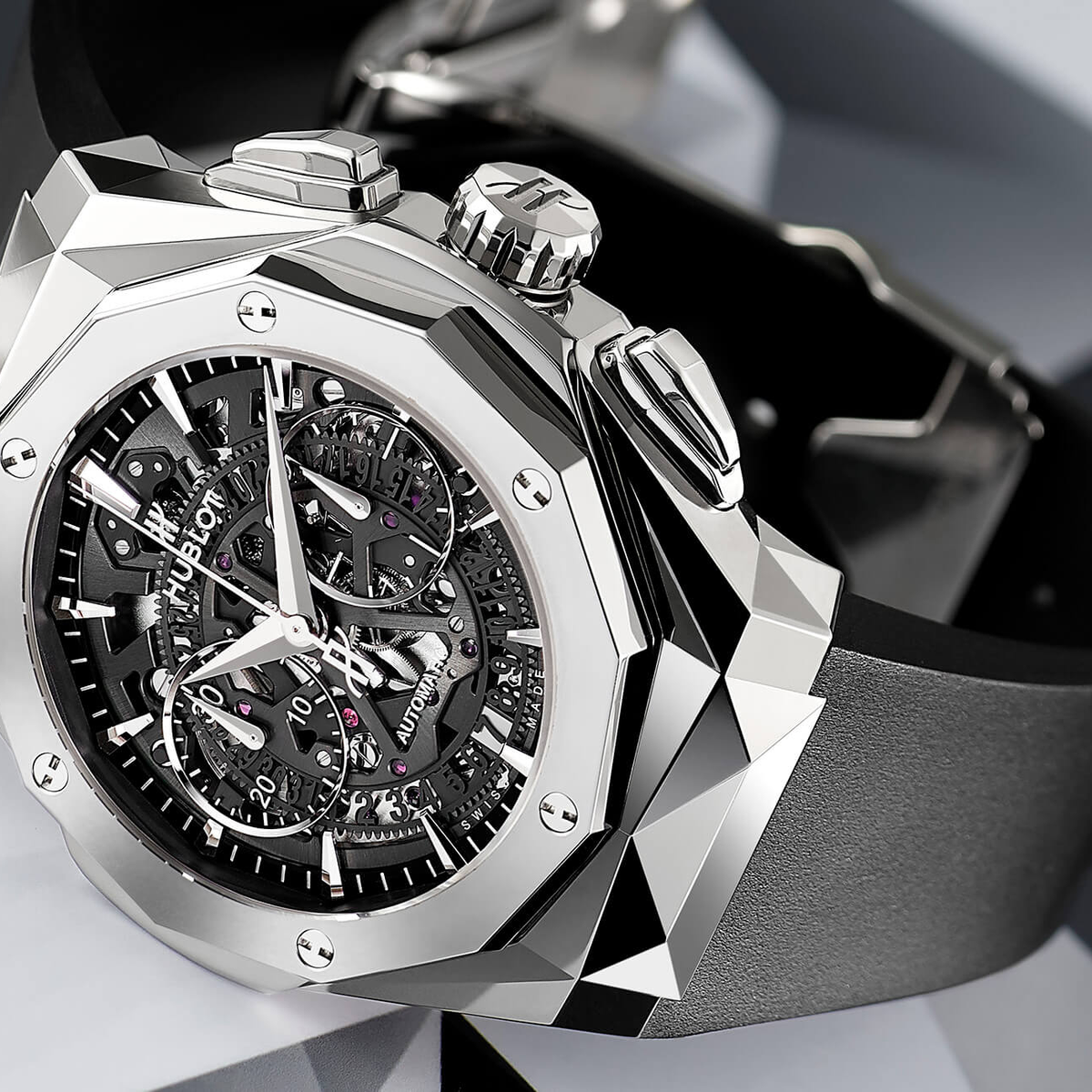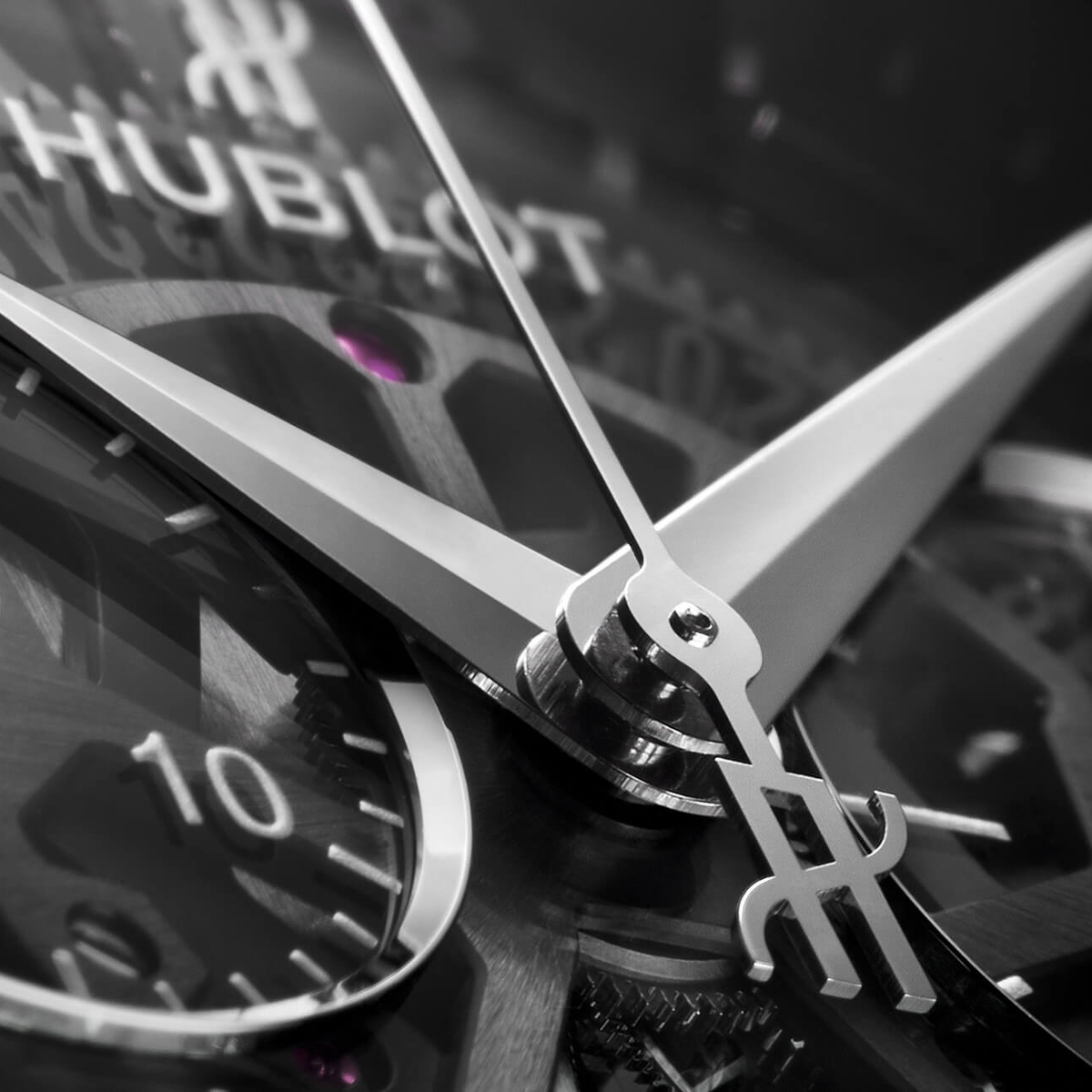Richard Orlinski teams up with Hublot. Richard Orlinski teams up with Hublot. Richard Orlinski teams up with Hublot. Richard Orlinski teams up with Hublot. Richard Orlinski teams up with Hublot
Richard Orlinski teams up with Hublot. Richard Orlinski teams up with Hublot. Richard Orlinski teams up with Hublot. Richard Orlinski teams up with Hublot
02 February 2018
Richard Orlinski teams up with Hublot
The world's top-selling French contemporary artist has put his name to a Hublot watch. The Classic Fusion Aerofusion Chronograph Orlinski is a unique mix of folds, facets and ridges cut in titanium or ceramic. Richard Orlinski was in Geneva for the launch... but who invited the bright blue gorilla?
"Gorgeous, isn't it? Can you honestly say you've seen a more beautiful watch this week?" Richard Orlinski was clearly a proud man when, early January, he welcomed guests to one of Geneva's grandest hotels to present the watch he has created alongside Hublot. Made as two 200-piece limited editions in titanium or blue ceramic, the Classic Fusion Aerofusion Chronograph Orlinski is, according to Hublot, "the first work of art which shows time". Really?
Related articles
Watchmaking Or The Temptation Of Art – I
Watchmaking Or The Temptation Of Art – II
Watchmaking Or The Temptation Of Art – III
Watchmaking Or The Temptation Of Art – IV
Watchmaking Or The Temptation Of Art – V
Watchmaking Or The Temptation Of Art – VI
Watchmaking Or The Temptation Of Art – VII
There has always been the question of whether watchmaking constitutes an art in its own right. When you were designing this watch, did you think of it as a piece of art?
I'm convinced art is universal and should be a part of everyone's life. I see no reason why a functional object should be seen as separate from artistic creation. On the contrary. My practice aims to make art accessible. I didn't want to go off on some artistic bender. My idea was to make a watch anyone can wear. Most of all, I wanted to make something people would like. What we have here is a wearable, practical work of art that isn't completely over-the-top or reserved for an elite.
The watch you've made with Hublot is very much in your style. How did you work together?
I had input across the entire watch. The case, of course, but also the bezel, pushers and hands. The project wasn't to customise a watch but to create something completely new. Once the project was underway, I first defined what I wanted with my studio, Orlinski Design, following which I had a clear blueprint to put to Hublot. As a watch collector and enthusiast myself, obviously I hadn't come up with something totally impractical. I was aware of the different constraints involved in making a watch, and I worked with these to combine my DNA with that of Hublot.
Where did the inspiration come from?
I adapted my world to the watch, in particular the facets that are also on my large animal sculptures. I'm not into roundness, more angles. We looked again at the shape of the dodecagonal bezel. Despite its very contemporary appearance, the design actually builds on certain codes of traditional watchmaking, especially the shape of the crown and the pushers.
This is the first time you've worked with a watch brand. What motivated you?
I love watches. A watch is the only jewellery a man can "officially" wear. You'll see me with more fashionable, funky bracelets too, but who's to say whether I'll still be wearing them a year or two from now. There is something enduring and elegant about a watch. A universal quality. It's jewellery that tells the time, it's brilliant. That it should be possible to contain so many technical elements and so much emotion in such a tiny object has always fascinated me.
Why Hublot?
I'd turned down plenty of offers before embarking on this adventure, which lasted an entire year. Ricardo Guadalupe [Hublot's CEO] gave me total freedom, just as long as the project was feasible. It sounds crazy, I know, but Hublot gave me a free hand and the teams followed, with all the difficulties that implies. More and more brands are looking to work with artists. There's a definite trend to use art when creating functional objects. I'm convinced this is just the beginning. Imagine what it'll be in ten years' time.
